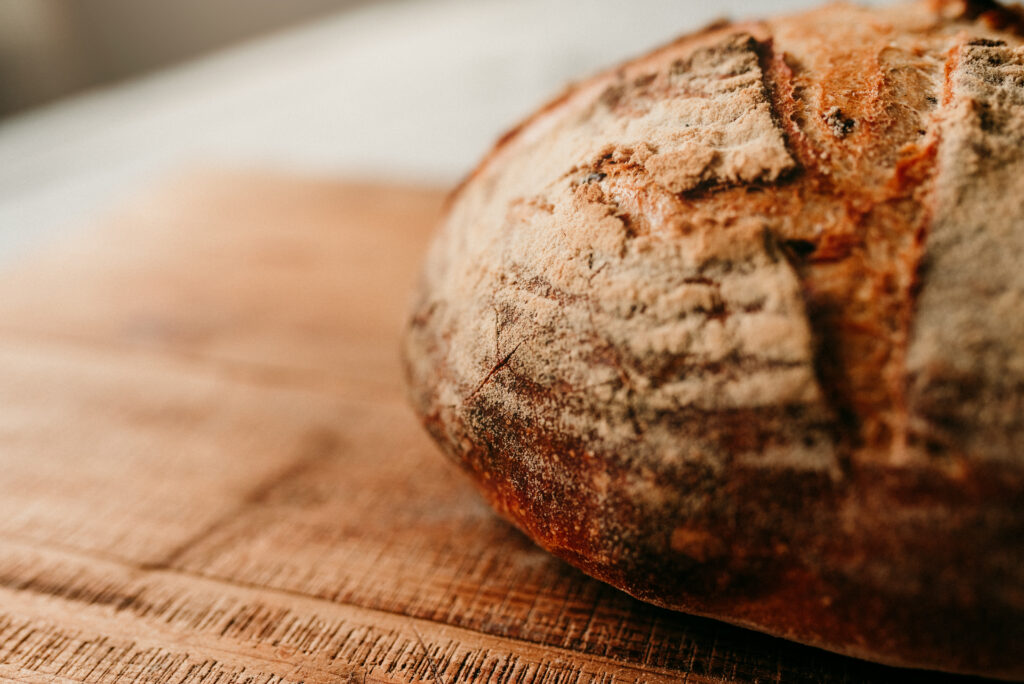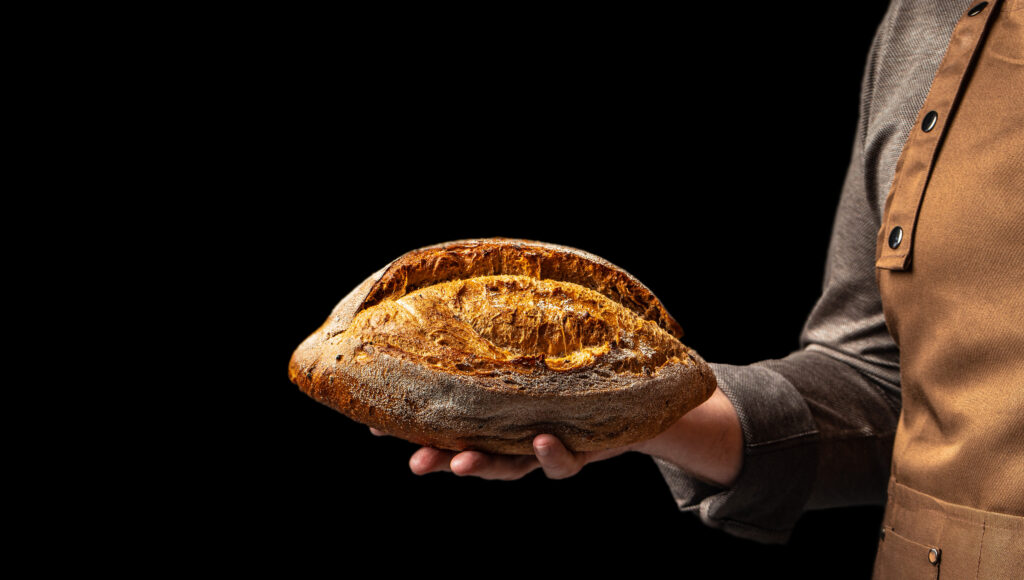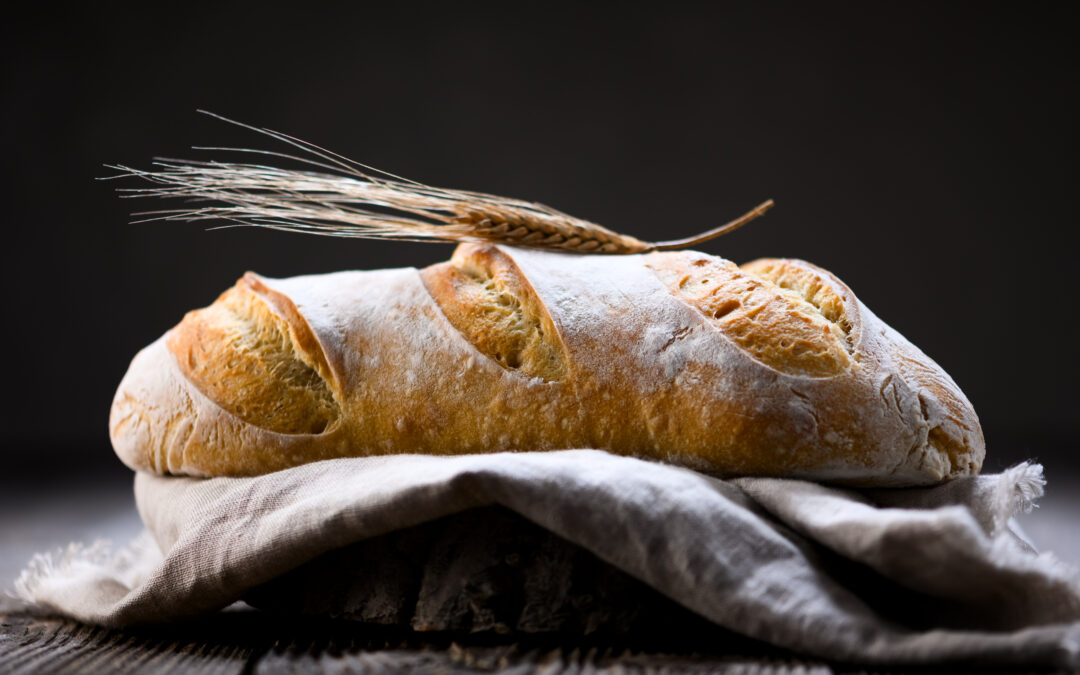Remember lockdown sourdough? The starter-sharing, Instagram-posting, carb-laden hobby that kept us sane in 2020?
Well, that fever dream of fermentation has evolved into something bigger, weirder, and way more profitable. Sourdough has broken out of artisanal bakeries and home kitchens and invaded nearly every aisle of your grocery store.
The Crusty Takeover
Whole Foods Market’s trend council has officially declared sourdough one of 2025’s biggest food trends, citing its expansion beyond traditional loaves.
We’re talking sourdough spaghetti. Sourdough crackers. Sourdough pizza crusts. Sourdough chocolate. Even sourdough pancake mix for those who want the fermented-bread experience without the wait.
Brands like Bionaturae are launching organic sourdough pasta (arriving in stores February 2025). Companies like Base Culture and Rudi’s are bringing gluten-free sourdough options to mainstream retailers. Whole Foods’ own bakery launched Pumpkin Turmeric Sourdough, combining trendy spices with the fermented base.
Walk through any Whole Foods or Trader Joe’s and you’ll find dedicated sourdough sections showcasing the breadth of innovation. It’s not just bread anymore—it’s a platform ingredient that brands can leverage across multiple categories.

Why Now? The Gut-Health Connection
Part of this crusty takeover is the gut-health movement sweeping food culture.
Sourdough’s natural fermentation process breaks down gluten and produces beneficial bacteria, making it easier to digest than conventional bread. The wild yeasts and lactic acid bacteria create prebiotics and probiotics that support digestive health.
In an era obsessed with microbiomes and wellness, sourdough offers the comforting carbs we crave with a health halo we can justify. It’s permission to eat bread again—doctor’s orders, basically.
But there’s more to it than wellness culture.
Superior Flavor, Naturally Preserved
Sourdough delivers superior flavor—that tangy, slightly sour complexity you can’t get from commercial yeast. The longer fermentation time allows enzymes to develop deeper taste profiles. The result is bread that actually tastes like something beyond bland fluffiness.
It also improves shelf life naturally, no preservatives required. For food manufacturers, that’s gold: a way to market products as both healthier and tastier while reducing chemical additives. Clean label, check. Better taste, check. Longer shelf life, check.
The fermentation also creates that distinctive texture—crispy, caramelized crust giving way to airy, hole-studded interior. It’s bread with character.
The Product Innovation Explosion
The creativity in product development is genuinely impressive. Let’s take a tour through the sourdough aisle:
Breakfast: Jesha’s offers sourdough pancake mix for busy mornings. Essential makes bake-at-home sourdough for that fresh-from-the-oven experience. Whole Foods bakery features Vanilla Earl Grey Scones made with sourdough base.
Pasta night: Bionaturae’s sourdough spaghetti brings fermentation benefits to Italian cooking. (Yes, really. Fermented pasta. We’re living in the future.)
Snack time: Patagonia Provisions makes sourdough sea salt crackers. Wasa offers Swedish-style sourdough crispbread. Brad’s makes a balsamic salad snack with sourdough.
Pizza night: Pinsa Love creates sourdough-based pinsa, the Roman flatbread that’s lighter and crispier than traditional pizza. Multiple brands offer sourdough pizza crusts.
Dessert: Sourdough brownies promise richer flavor and better texture than their conventional counterparts. Sourdough chocolate is entering the market.
The Pandemic Legacy
The pandemic taught Americans how to make sourdough at home. Instagram feeds filled with proud loaves. Starters were named and nurtured like pets. People mailed dried starter cultures to friends like precious heirlooms.
Now food companies are betting we’d rather buy the benefits without the fuss.
And honestly? They’re probably right. For every person still faithfully feeding their starter five years later, there are dozens who tired of the maintenance but still crave that tangy, complex flavor. The grocery store sourdough explosion is liberating for the non-committed.
Ancient Wisdom Meets Modern Convenience
The trend also fits broader consumer shifts toward traditional food preparation methods.
Fermentation, slow cooking, and artisanal techniques are having a renaissance as people seek connections to food’s origins. Sourdough represents continuity with the past—humans have been fermenting bread for thousands of years—while embracing modern nutritional understanding.
It’s ancient wisdom meets contemporary wellness, wrapped in a convenient grocery-store package. You get the benefits of grandmother’s bread-making traditions without spending hours maintaining a starter or kneading dough.
The food industry has figured out how to industrialize a craft process while maintaining the essential benefits. That’s no small feat.

The Artisan Bakeries Are Thriving Too
Here’s what’s beautiful about sourdough’s comeback: it’s not either-or.
Small-batch bakeries that kept sourdough traditions alive during the commercial bread era are thriving. Lines wrap around blocks for naturally-leavened loaves from neighborhood bakeries. Bread bakers are becoming local celebrities.
Meanwhile, grocery store versions make the benefits available to people who’ll never maintain a starter or who live nowhere near an artisan bakery. It’s democratization without dilution.
Both can exist. Both should exist.
What’s Next for Sourdough
Food industry analysts predict the sourdough trend has staying power beyond typical food fads. Here’s why:
The health benefits are real. Unlike some wellness trends based on pseudoscience, sourdough’s digestive advantages are backed by research. That gives it credibility and longevity.
It’s versatile. Sourdough works in sweet and savory applications, breakfast through dessert. That flexibility means brands can keep innovating without exhausting the concept.
It has cultural depth. This isn’t a manufactured trend—sourdough has thousands of years of baking tradition behind it. That cultural resonance gives it weight.
Consumers want it. Sales data shows consistent growth, not just a spike. People are incorporating sourdough products into regular shopping habits, not just trying them once.
Expect to see sourdough expand into even more categories: sourdough pretzels, sourdough bagels, sourdough cookies, sourdough cereals. If it involves grain, someone’s probably working on a sourdough version.
Why We’re Obsessed
There’s something deeply satisfying about sourdough’s comeback arc. It started as survival baking during lockdown, became an Instagram flex-fest, and now it’s a legitimate food industry category worth billions.
That journey from necessity to hobby to commercial trend captures our collective mood: we’re seeking comfort, health, and authenticity, preferably all in one package.
Sourdough also represents a rare win for both artisanal food culture and mass-market accessibility. This isn’t big food crushing small-batch producers—it’s both thriving simultaneously, serving different needs and preferences.
For those of us who tired of feeding finicky starters during the pandemic, the grocery store sourdough explosion is liberating. We can enjoy the tangy flavor, digestive benefits, and superior texture without the commitment.
Buy the sourdough spaghetti. Try the sourdough crackers. Grab those sourdough pizza crusts. Embrace the fermented future.
Your gut—and your taste buds—will thank you.

